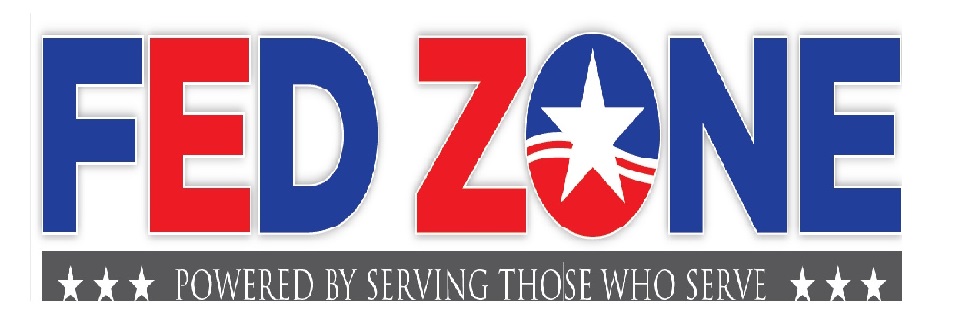Rules for Continuing FEHB (Federal Employee Health Benefits) After Retiring from Federal Service – Part I

This column is the first of two FEDZONE columns discussing the requirements that a federal employee must meet in order to continue their Federal Employee Health Benefits (FEHB) health insurance benefits throughout their retirement upon retiring from federal service. A review of the FEHB program is presented, including what the FEHB program consists of, and which family members are eligible to be included on an employee/retiree FEHB program health insurance plan.
The FEHB health insurance program is the largest group-sponsored health insurance program in the United States. Both full-time and part-time permanent employees are eligible to enroll in the FEHB program. They can enroll in the FEHB program when they are initially hired as permanent employees with guaranteed enrollment (no underwriting, no waiting periods, no pre-existing conditions exclusions). Employees can choose to enroll in different types of FEHB program health plans including fee-for-service plans, preferred-provider organization (PPO) plans, health maintenance organizations (HMOs) and High Deductible Health Plans (HDHPs). Employees can include on their FEHB health plans eligible family members. Eligible family members include spouses and children under the age of 26. Employees can change their FEHB health plans from one year to the next. The change of one FEHB health plan to another FEHB health plan can be made by an employee during the annual FEHB “open season” (held every year from the second Monday of November through the second Monday of December) with the change to a new FEHB health plan becoming effective on the first day of the new leave year. For example, the 2021 FEHB program open season was conducted between Nov. 8,2021 through Dec. 13, 2021. Those employees who switched their FEHB health plans during this open season had their new FEHB program health plans take effect on Jan. 2, 2022, the first day of the 2022 leave year.
An Employee’s Requirements to Continue FEHB After Retiring from Federal Service
A federal employee is eligible to continue his or her FEHB health benefits in retirement upon retiring from federal service if he or she meets the following two requirements:
- (1) He/she is entitled to retire on an immediate annuity under a retirement system for civilian employees (see below for a list of these retirement systems); and
- (2) He/she has been continuously enrolled or covered by other family members who are federal employees (such as a spouse) in any FEHB health plans for the 5 continuous years of service immediately before the date the annuity starts, or for the full period(s) of service since his or her first opportunity to enroll, if less than five years.
When an employee elects not to enroll in the FEHB health benefits program, the employee must certify by his or her signature on form SF 2809 (Health Benefits Election Form), that he/she understands the effect that has on eligibility to carry FEHB coverage into retirement.
Qualifying Retirement Systems
Qualifying civilian retirement systems include: (1) Civil Service Retirement System (CSRS); (2) Federal Employees Retirement System (FERS); (3) CIA Retirement System; (4) Federal Judiciary Retirement System; (5) Foreign Service Pension System; and (6) Foreign Service Retirement System.
FERS “MRA+10” and “MRA+20” Immediate and Postponed Retirement
If a separating employee is covered under FERS and qualifies for an immediate retirement under the “Minimum Retirement Age (MRA) + 10” or “MRA+20” provisions, then the employee can continue the FEHB enrollment into when his or her FERS annuity starts, provided the employee meets the requirements for continuing coverage into retirement, as discussed in (2) above.
If a FERS employee who reaches MRA with a minimum 10 years of service postpones the start of his or her FERS annuity (in order to avoid a reduction in the annuity, called MRA + 10 and MRA + 20 “postponed” retirement), FEHB program enrollment will temporarily terminate when the individual separates from employment. The departed employee may choose to resume FEHB program coverage on the date selected for the FERS annuity to start.
Qualifying Service for the Purpose of Meeting the “Five-Year FEHB Continuous Enrollment” Rule
For purposes of continuing FEHB coverage into retirement, qualify service means time in a federal job position in which an individual was eligible to enroll in the FEHB program. The individual is not required to have been an enrollee continuously, but the individual must have been continuously covered by an FEHB enrollment. That is, under his or her own (“self only”) enrollment, or under another family member such as a spouse (for example, spouse has self plus one enrollment in which “self” is the spouse and the “one” is the individual). Continuous coverage includes:
- Time covered as a family member under another person’s FEHB enrollment, such as a spouse
- Time covered under the Uniformed Services Health Benefits Program, also known as TRICARE or CHAMPUS, or CHAMPVA as long as the individual was covered under an FEHB enrollment at the time of retirement
- Coverage under Medicare does not count in determining continuous coverage and
- Service as a Non-appropriated Fund (NAF) employee does not count in determining continuous coverage since it is not federal service and subject to FEHB coverage.
Breaks In Service
Breaks in service are not counted as interruptions when the five years of service requirement is determined, as long as the individual reenrolls in the FEHB program within 60 days prior to retirement. The following examples illustrate:
Example 1. Jerry elected FEHB coverage on Feb. 11,2012 and had a break in service from Jan. 1,2016 through
Jan. 1,2018. Upon his return to federal service, he reelected to enroll in the FEHB program. He retired on Dec. 31, 2020. Larry is eligible to continue his FEHB benefits coverage into retirement because he has been continuously enrolled for the five years of service prior to retirement. Note that Jerry’s break in service (Jan. 1,2016 through Jan. 1,2018 is not counted in the five-year continuous FEHB enrollment because Jerry was not eligible to be enrolled in the FEHB program during that period.
Example 2. Sheila elected to not enroll in the FEHB program upon her initial employment in federal service in 2015 when she was age 57. She left federal service in February 2018 and was rehired in January 2019 and elected to enroll in the FEHB program at that time. When she retired on Dec. 31, 2021, she was not eligible to continue FEHB health benefits in retirement because she was not covered for the five years of service before her retirement. Her 2019 rehire date does not count as her first opportunity to be insured under the FEHB program because of her prior employment (2015 through January 2018) in which she elected not to enroll.
Late FEHB Program Election
An individual is considered to have been continuously enrolled when allowed to make a late election to join the FEHB program after an individual’s employing office determined that the individual was unable to enroll in a timely fashion for reasons beyond the individual’s control. The following example illustrates:
Example 3. Mike’s employing office notified him on Mar. 20,2016 that he could make a late election to enroll in the FEHB program. He promptly enrolled, and on Dec. 31,2020 he retired from federal service. Mike is able to continue his FEHB health benefits into retirement, even though he was enrolled in the FEHB program for less than five continuous years before he retired. This is because the date Mar. 20,2016 is considered to be Mike’s first opportunity to enroll in the FEHB program.
Eligibility as a Temporary Employee
An individual’s decision not to enroll in the FEHB program as a temporary employee eligible to enroll does not affect the individual’s future eligibility to continue FEHB health insurance as a retiree. Only services for which the government contributes toward the cost of health benefits counts in determining whether the individual has met the five-years of service, or first opportunity, requirement to continue coverage as a retiree.
Eligibility Under Temporary Continuation of Coverage
Enrollment or eligibility for enrollment as a former employee under the temporary continuation of coverage (TCC) is not considered in determining whether an individual meets the five-years of service requirement for continued coverage as a retiree. This is because the individual is not a federal employee while enrolled in the FEHB program through TCC and the government does not contribute towards the FEHB program premiums. However, the time an employee was eligible to enroll in the FEHB program was covered as a family member under the TCC enrollment of another person does count toward the five-years of service.
Eligibility for Health Benefits After Retirement – Who Makes the Determination?
At retirement, the employing office will tentatively determine if a retiring employee is eligible to continue enrollment. OPM’s Office of Retirement Programs will review the retiring employee’s relevant retirement and health benefits documents and make a final determination of the employee’s eligibility to continue the FEHB enrollment into retirement.
PART II >
Edward A. Zurndorfer is a CERTIFIED FINANCIAL PLANNER™ professional, Chartered Life Underwriter, Chartered Financial Consultant, Chartered Federal Employee Benefits Consultant, Certified Employees Benefits Specialist and IRS Enrolled Agent in Silver Spring, MD. Tax planning, Federal employee benefits, retirement and insurance consulting services offered through EZ Accounting and Financial Services, and EZ Federal Benefits Seminars, located at 833 Bromley Street – Suite A, Silver Spring, MD 20902-3019 and telephone number 301-681-1652. Raymond James is not affiliated with and does not endorse the opinions or services of Edward A. Zurndorfer or EZ Accounting and Financial Services. The information has been obtained from sources considered to be reliable, but we do not guarantee that the foregoing material is accurate or complete. While we are familiar with the tax provisions of the issues presented herein, as Financial Advisors of RJFS, we are not qualified to render advice on tax or legal matters. You should discuss tax or legal matters with the appropriate professional.
